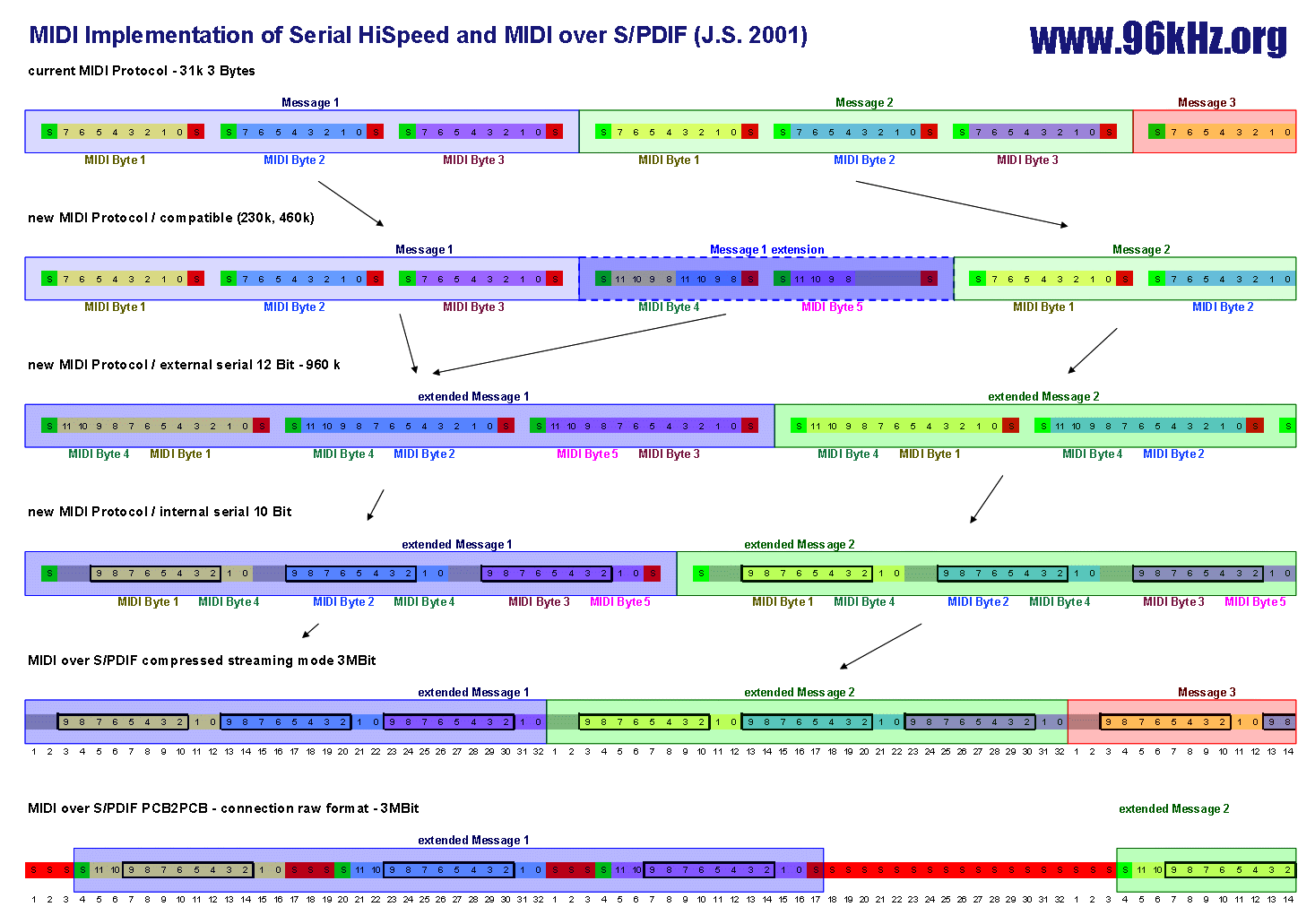| 96 kHz.org |
| Advanced Audio Recording |
|
Improved MIDI transmission This article describes my enhancements of the MIDI standard and shows ways to get around several issues by increasing transmission speed and controller resolutions. See this example for an explanation here
The problem is, that
even with enhanced MIDI at 230k
like I proposed it
here, precise piano playing
is not possible. Also with
interfaces like USB at PCs,
there will still be a bottle neck and latency when transferring music data to the
sound device. The orchestral case, using 32 or 64 voices
and intensive controller activity cannot be handled by the MIDI protocol.
Latency should not be the big problem during offline work like production,
but bandwidth is. The density of orchestral music ranges between 10%
and 50%, so the number of voices simultaneously active is about 5 to
30! even for small orchestral music. Including controller values and
sysex, around up to 100 midi messages will be required within the
critical
2..3 ms period. Allowing 5ms for maximum delay, a 1MB connection will
be required. According to the table more than 16000 events could be transported
per second which will work for most applications. Using 5 Byte MIDI solves the issue of the coarse controller values since 12 bits are available now. Using S/PDIF physical layer at least 3MBaud are available to transmit MIDI data with acceptable delay and sufficient precision. Using 10 Bit reduced MIDI like in the 10 Bit MIDI Controller, 2 MIDI messages can be compressed into a S/PDIF word of 32 Bits. Alternatively two S/PDIF words can be used to store MIDI raw data including start / stop and parity bits for easy decoding. Finally full 5Byte MIDI can be transmitted using external S/PDIF connection using the normal protocol. Read also the former article
about the
limitations of MIDI.
|
| © 2001 - Jürgen Schuhmacher |
